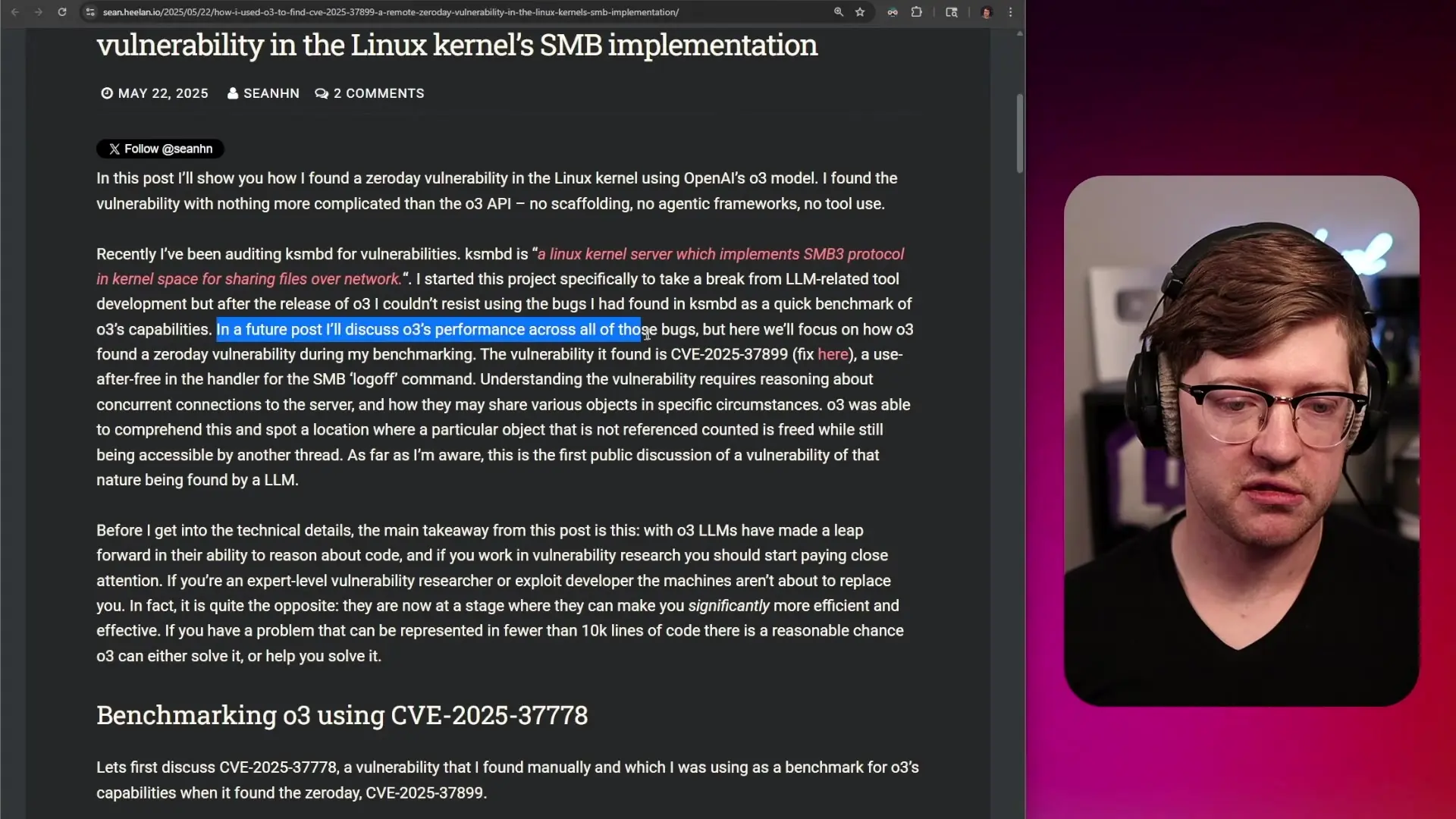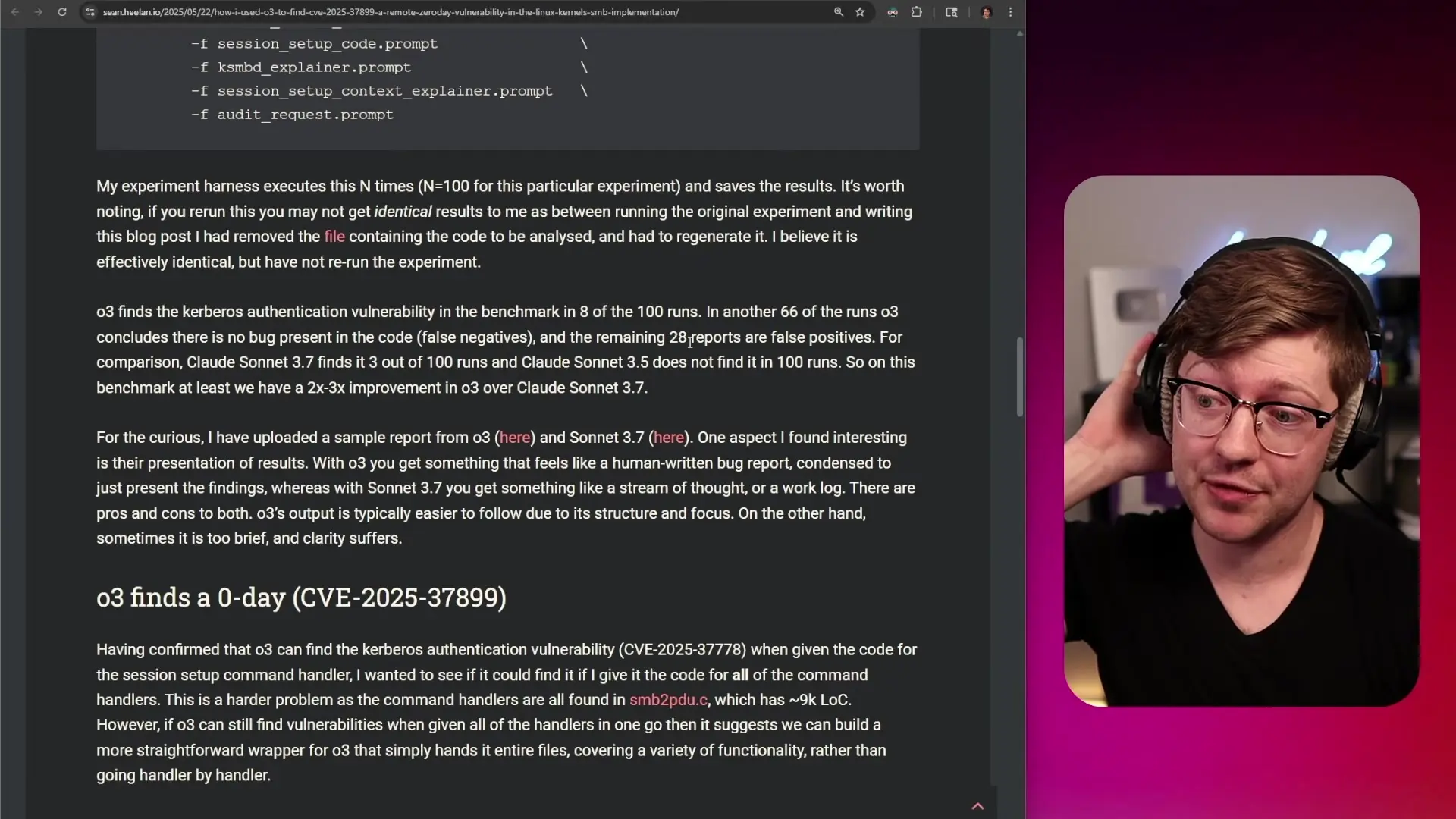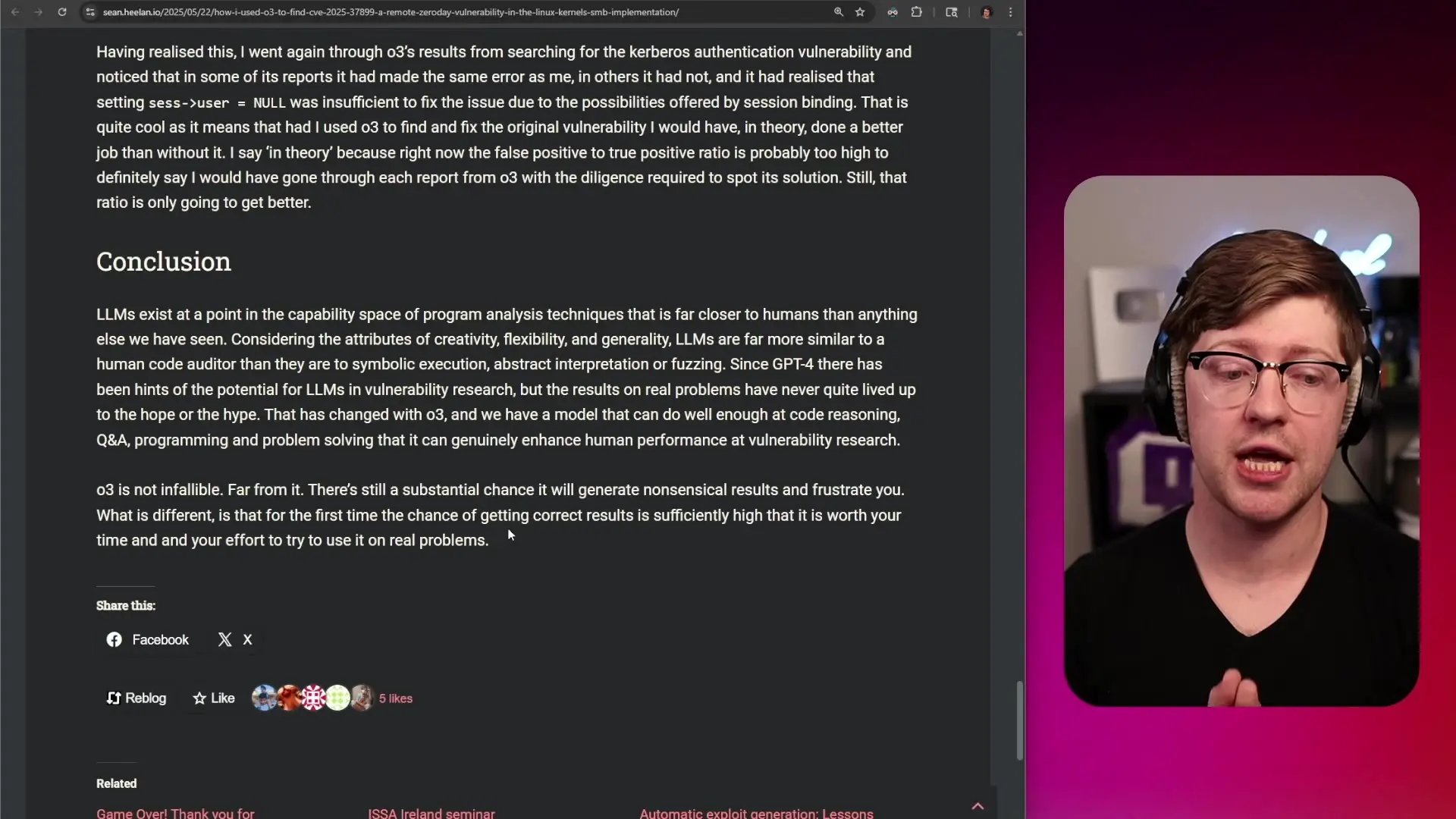
The cybersecurity landscape is witnessing a transformative shift as AI tools demonstrate increasingly sophisticated capabilities in vulnerability detection. Recently, a researcher successfully used OpenAI's O3 model to identify a previously unknown zero-day vulnerability in the Linux kernel's SMB implementation, requiring no specialized frameworks or additional tools beyond the standard O3 API.

Understanding the Zero-Day Vulnerability
The discovered vulnerability (CVE-2025-37899) is a use-after-free bug in the Linux kernel's SMB implementation. This critical security flaw exists in KSMBD, a Linux kernel server that implements the SMB3 protocol in kernel space for sharing files over networks. What makes this discovery particularly significant is that use-after-free vulnerabilities are notoriously difficult to detect through conventional methods like fuzzing.
Use-after-free vulnerabilities occur when a program continues to use memory after it has been freed, potentially allowing attackers to execute arbitrary code. These vulnerabilities are state-dependent and require specific conditions to be met in a particular sequence, making them especially challenging to identify through standard security testing approaches.
Why Use-After-Free Vulnerabilities Are Hard to Detect
Traditional vulnerability detection methods like fuzzing involve injecting arbitrary data into applications and observing how they handle it. However, use-after-free vulnerabilities present unique challenges because they depend on specific state conditions:
- An object must be created and in use
- The object must then be freed
- The program must subsequently attempt to access the freed object
Creating test cases that reliably reproduce these conditions is extremely difficult. The probability of randomly discovering such vulnerabilities through traditional fuzzing is very low, as it requires precise timing and state management across multiple operations.
How AI Detected What Humans Might Miss
The O3 model demonstrated remarkable capabilities in analyzing code and identifying potential security issues. In this case, the model was able to:
- Comprehend the complex interactions between different parts of the codebase
- Identify where an object (session_user) was freed without proper reference counting
- Recognize that the freed object could still be accessed by another thread
- Understand the specific conditions needed to trigger the vulnerability
What makes this discovery particularly impressive is that the AI identified this vulnerability without any specialized security frameworks or tool use. It was able to reason about concurrent connections to the server and how they might share various objects under specific circumstances.

Technical Analysis of the Vulnerability
The zero-day vulnerability occurs in the handler for the SMB logoff command. The root cause involves a function that frees a user session object under certain conditions but fails to properly handle all potential paths through the code:
if (session_state == SMB_SESSION_VALID) {
ksmbd_free_user_session(session_user);
// No null assignment here
// session_user pointer is not reset
rep_val = ksmbd_authenticate_session_inblo();
// This function may not reinitialize session_user in all cases
}The vulnerability arises because:
- When session_state equals SMB_SESSION_VALID, the code frees session_user
- The pointer is not set to NULL after freeing
- Some execution paths in ksmbd_authenticate() do not reinitialize session_user
- The code incorrectly assumes session_user won't be accessed if the function returns an error
- In reality, session_user can still be accessed after being freed, creating a use-after-free condition
Exploiting this vulnerability requires understanding how to manipulate the session state and trigger specific execution paths that don't reinitialize the freed object, while ensuring the object is accessed elsewhere in the code.
Why This Discovery Matters for Cybersecurity
This discovery represents a significant milestone in AI-assisted security research for several reasons:
- It affects the remote attack surface of the Linux kernel, making it particularly serious
- Use-after-free vulnerabilities are among the most difficult to detect with traditional methods
- The AI was able to reason about complex state interactions across multiple functions
- It demonstrates that AI can now identify vulnerabilities that might take human researchers significant time to discover
This achievement follows earlier efforts by organizations like DARPA, which has been exploring AI's potential for vulnerability detection through competitions like the Automated Intelligent Cyber-Security Challenger (AICC) at Defcon.

Implications for the Future of Security Research
The successful identification of a zero-day vulnerability using AI has profound implications for security research and development:
- AI models may help address the fundamental challenge in security engineering: finite time to analyze seemingly infinite code
- Large language models can maintain awareness of more code context than humans typically can, making them well-suited for identifying complex, state-dependent vulnerabilities
- Security teams might increasingly use AI as a first-pass tool to identify potential vulnerability hotspots for human review
- Organizations developing critical infrastructure software may need to incorporate AI-assisted code auditing into their security processes
While this breakthrough demonstrates AI's growing capabilities in security research, it's important to note that human expertise remains essential. AI tools like O3 are best viewed as powerful assistants that can help security researchers work more efficiently and effectively, rather than as replacements for human judgment and creativity.
Conclusion: A New Era in Vulnerability Detection
The discovery of a zero-day vulnerability in the Linux kernel using OpenAI's O3 model marks an important milestone in the evolution of security research. As AI tools continue to improve, we can expect them to play an increasingly important role in identifying complex vulnerabilities that might otherwise go undetected.
For security professionals, this development underscores the importance of staying current with AI capabilities and considering how these tools might be incorporated into existing security workflows. While AI won't replace human security researchers anytime soon, it can significantly enhance their effectiveness by handling the initial analysis of large codebases and flagging potential issues for deeper investigation.
As we move forward, the combination of human expertise and AI assistance promises to strengthen our collective ability to identify and address critical security vulnerabilities before they can be exploited by malicious actors.
Let's Watch!
AI Discovers Zero-Day Vulnerability in Linux Kernel: What Security Teams Need to Know
Ready to enhance your neural network?
Access our quantum knowledge cores and upgrade your programming abilities.
Initialize Training Sequence